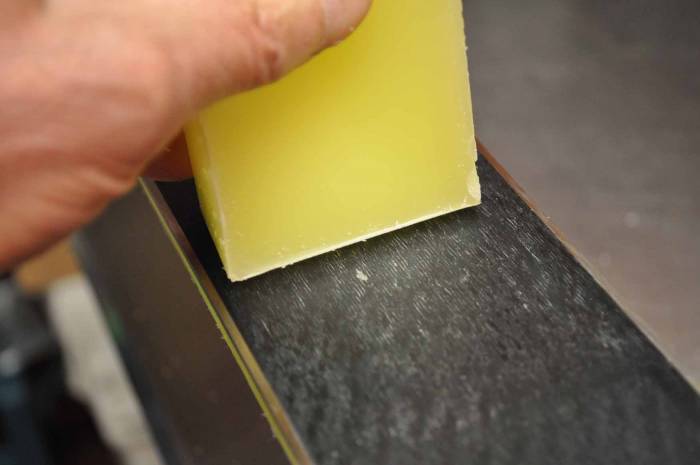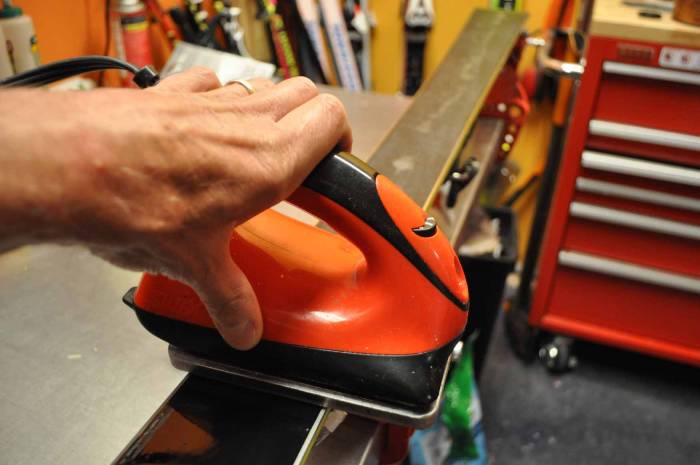Learn how to wax your skis and snowboards after a full season of riding with our handy guide. For optimal performance, don’t let your skis sit unwaxed in your basement until next season!

Your skis and snowboard bases are like a cast iron skillet. Use that skillet infrequently, don’t take care of it, and your next piece of French toast will be shredded and stuck to the pan. Use the skillet frequently, making sure to wash, dry, and oil it, and it will be slicker than Teflon. Your board’s bases are no different.
Frequent waxing throughout the season will result in boards that perform more predictably (especially in sticky, wet snow). End-of-season waxing allows your boards to bask all summer in an environment that will boost their performance next season.
Neglect your bases, and your experience will end up like French toast in a sketchy skillet – chundered.
You can do most off-season maintenance of skis and boards from home. Read on for our do-it-yourself guide on ski and snowboard waxing and care.
Last Day Skiing: Wax Ready?
After your last day, assess the overall condition of your bases. If the bases have a flat and gray appearance in places, it indicates they’re dried out and require professional attention.
“When a ski dries out, it means the pores are closing, which is compressing the base. The only way to fix that is to grind off the top layer,” claims Wes Price of Wintersteiger.
“The amount of material removed is very small, about 0.03 millimeters on an average grind. This is over 100 passes on a stone!” said Price.
If in doubt, have them stone ground. But knowing your technician’s level of mastery and the condition of their equipment can help you guess at the quality of the final results.
Once you have assessed that your bases are wax ready, or after they’ve been stone ground, it’s time to wax.
How to Wax Your Bases


‘Hot Scraping’ Wax Off Bases

Wax Off, Wax On










